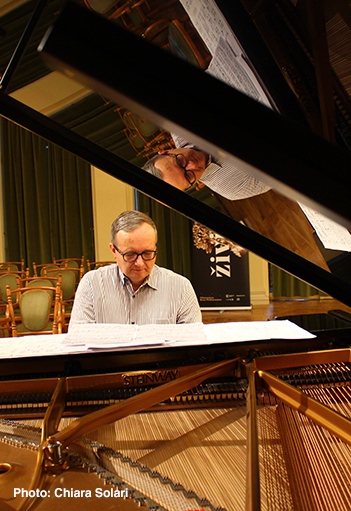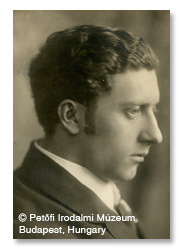
Giorgio Koukl is a highly accomplished pianist known for his expressive performances, exceptional technique and profound musicality. With a passion for both traditional repertoire and contemporary works, Koukl continues to captivate audiences worldwide through his performances and recordings.
A renowned specialists in Parisian music of the 1920s and ‘silver age’ composers from St Petersburg, he is also considered one of the world’s leading interpreters of Martinů’s piano music, having recorded that composer’s complete solo piano music, together with five albums of Martinů’s vocal music and two albums of his piano concertos for Naxos. His discography also includes an acclaimed series of the complete solo piano music of Alexander Tcherepnin, and lauded recordings of works by Vítězslava Kaprálová, Paul Le Flem (awarded a Diapason d’Or), Carl Maria von Weber, Johannes Brahms and Alexandre Tansman. He has also made world première recordings of works by Witold Lutosławski, Arthur Lourié and Tibor Harsányi.
Koukl performes extensively throughout Europe, North America and Asia, and collaborates with renowned orchestras and conductors in solo performances and chamber music concerts.

Hungarian-born pianist, composer, conductor, and musicologist Tibor Harsányi was part of the lively Paris musical scene from 1923. He was a student of Kodály in Budapest, then travelled around Europe as a performer, settling briefly in Holland, where he worked as a conductor. Once in Paris he joined with other expatriate composers, including the Czech Bohuslav Martinů, the Romanian Marcel Mihalovici, the Swiss Conrad Beck, and the Russians Alexander Tansman and Alexander Tcherepnin. In a 1929 article in the Revue Musical, the critic Arthur Hoerée dubbed this group “l’école de Paris”, writing that they were not only “remarkable young talents rubbing shoulders with the French, but also foreigners who have chosen Paris as their base and participate in its artistic leanings, while at the same time retaining their individual national characters”.
Harsányi published a volume entitled Treize danses in 1929 featuring works by a number of members of l’école (including a Foxtrot of his own) that could be understood as a kind of manifesto of the style. Adhering to the anti-Debussy tendencies of Les six, but with a distinctly international cast, the music is flavoured with the influences of the American-inflected jazz of the Paris dance halls, the spare and often dissonant textures of the neoclassicists, and a certain amount of folk colour.
Harsányi himself was a prolific composer of chamber music, solo piano works, and songs, as well as opera and ballet. Aside from occasional performances of his setting of The Brave Little Tailor (1937) for chamber ensemble and narrator—described in a 1952 survey of his work (in the British journal The Chesterian) as “an exquisite and witty suite for chamber orchestra”—his music is essentially unknown today, in spite of its intrinsic quality and individual style.






























